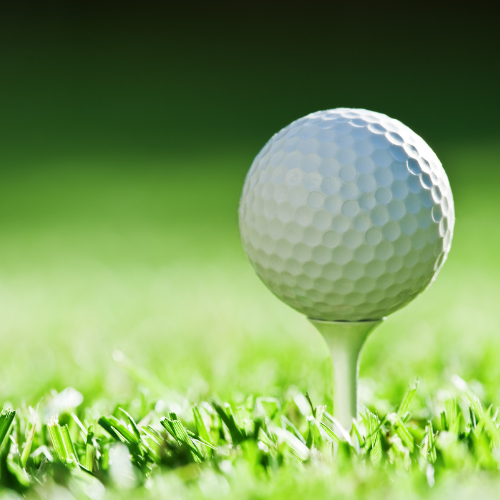This page contains affiliate links. As an Amazon Associate I earn from qualifying purchases. Learn more

The driver is one of the most commonly used and important clubs for any level golfer. Choosing a golf driver that fits you and your skill level means you will be on your way to a successful day on the course.
If you are in the market for a new driver, here are many factors you should know and want to consider.
- 6-4 Titanium: Aka Grade 5 or Ti 6-4, is the most common form of titanium alloy (much stronger than pure titanium) and is the material of choice in club head construction, especially the faceplate, of the modern golf driver. Why? It has nearly half the weight and almost twice the tensile strength of 316 stainless steel. This means a lighter, stronger driver club head.
- cc: Used to denote the size of the driver club head expressed in volume using “cubic centimeters”. The current legal limit as defined by the USGA is 460cc. The greater the number, the larger the club head. Larger club heads usually have bigger face plates producing a larger “sweet spot”.
- Center of Gravity: The physical definition is the point in an object where the total weight may be considered to be concentrated; the point at which the object would be perfectly balanced. Where the driver manufacturers place the “CG”, either through design or the placement of weights, can produce certain performance characteristics such as a draw bias or higher ball trajectory.
- Clubface: Simply, the surface of the club that strikes the ball at impact.
- Club Fitting: For optimal consistency and accuracy, you should have your clubs customized to your body and swing. Visit a Golf Store to receive help finding your optimal set makeup, loft angle, lie angle, shaft type, shaft length, grip size and more.
- Clubhead: The body of the club that the shaft is attached to. In the driver it is usually somewhat “pear-shaped” and consists of a sole, crown, and a face plate or clubface.
- Clubhead Speed: Or swing speed, is the velocity of the clubhead as it impacts the golf ball. Clubhead speed can be measured by a launch monitor and is helpful in selecting the proper shaft flex for each individual golfer.
- Coefficient of Restitution: Also referred to as C.O.R. or COR. Simply put as it applies to golf clubs, it is a numerical measurement of energy transfer when two objects collide, like the “spring-board” effect that occurs when a thin clubface strikes a golf ball. This number merely indicates the ability of a clubface to transfer maximum energy to the ball to achieve maximum distance. The USGA currently limits the COR to .830, with 1.000 being a perfect transfer of energy. The latest golf drivers have a COR set at or near this limit.
- Crown: The top surface of the driver as seen when looking down addressing the ball. Crowns can be made of different materials and can come with a variety of finishes like matte, anti-glare paint. Some sort of alignment aid is usually provided on the crown.
- Face Angle: The angle the clubhead makes with the target line (an imaginary line from the ball to the exact spot you are aiming for). The face angle is defined as being “square”, “closed”, or “open” (see Diagram). Several drivers featured on this website are adjustable for face angle as well as loft angle. Manufacturers often make drivers with fixed open or closed face angles, like a closed face game-improvement driver to aid golfers who slice the ball frequently.
 Forgiveness: The quality of a golf club, in its design structure, to diminish the ill effects of off-center hits outside the sweet spot so that they still result in a fairly decent tee shot. The design elements of many drivers, such as large club heads and high MOI, are aimed at “forgiving” the middle and high handicappers by making the consequences of bad ball contact less severe.
Forgiveness: The quality of a golf club, in its design structure, to diminish the ill effects of off-center hits outside the sweet spot so that they still result in a fairly decent tee shot. The design elements of many drivers, such as large club heads and high MOI, are aimed at “forgiving” the middle and high handicappers by making the consequences of bad ball contact less severe.- Game Improvement Driver: Simply put, a driver that offers plenty of forgiveness. Bad swings and off center hits are not overly penalized with severe losses of accuracy and distance.
- Hosel: The part of the clubhead where the shaft is inserted and fastened.
- Launch Angle: Immediately following impact, the angle of ascent the ball flight makes with the ground is known as the launch angle. The loft angle of the driver has the greatest influence, but many other factors can affect launch angle. Swing speed, center of gravity placement, clubhead speed, and even the “attitude” of the clubhead as it makes contact with the golf ball can affect the launch angle.

- Lie Angle: The angle created between the shaft centerline and the ground when the clubhead is at rest, as at address, with the sole of the club parallel to the ground at the striking target area. Lie angle is a minor issue in the fitting process of a driver, however if a lie angle is incorrect for a golfer it may adversely affect accuracy. Some of the drivers presented on this website are adjustable for lie angle.

- Loft angle: Or “loft”, is the angle the face of the clubhead makes with the shaft centerline, i.e. the vertical. Different lofts will yield different distances and ball trajectories. Some of the drivers presented on this website are adjustable for loft angle.
 Moment of Inertia: Or MOI, is the physical property that measures an object’s resistance to twisting around an axis. On the golf driver, MOI usually refers to the clubhead’s resistance to twisting around the shaft’s axis, especially on mishits on the toe which tends to open the club face slightly upon impact. Drivers with high MOI have high resistance to twisting and are therefore more forgiving, minimizing the ill effects of mishits.
Moment of Inertia: Or MOI, is the physical property that measures an object’s resistance to twisting around an axis. On the golf driver, MOI usually refers to the clubhead’s resistance to twisting around the shaft’s axis, especially on mishits on the toe which tends to open the club face slightly upon impact. Drivers with high MOI have high resistance to twisting and are therefore more forgiving, minimizing the ill effects of mishits.- Offset: A golf club design in which the hosel and shaft are placed forward, and in front, of the face of the club. The offset is a game improvement driver that gives the golfer just enough time to get the clubhead a little more “square” to the ball at impact. This driver design can greatly benefit the golfer who slices frequently.
- Perimeter Weighting: The strategic placement of weights around the perimeter of the sole of a basically hollow clubhead creating a low center of gravity and a high moment of inertia. The result is a game improvement driver that forgives off center mishits with quicker launches and higher trajectories.
- Swingweight: The measure of a driver’s resistance to being swung or, more precisely, how heavy the club feels when swinging it. Golf clubs may weigh exactly the same but can possess different swingweights. It’s all a matter of balance. Swingweight is expressed using an alphanumeric designation of letters from A to G and numerals from 0 to 10, A0 being the lightest and G10 the heaviest. Some feel it is important to match the swingweight to your personal swing speed.
Final Thoughts
Learning the most about drivers means you’ll have all the information you need before making a purchase. Understanding what you want in a golf driver, what features are available will help your game. Working with a certified club fitter can also help you find the best fit.


 Forgiveness: The quality of a golf club, in its design structure, to diminish the ill effects of off-center hits outside the sweet spot so that they still result in a fairly decent tee shot. The design elements of many drivers, such as large club heads and high MOI, are aimed at “forgiving” the middle and high handicappers by making the consequences of bad ball contact less severe.
Forgiveness: The quality of a golf club, in its design structure, to diminish the ill effects of off-center hits outside the sweet spot so that they still result in a fairly decent tee shot. The design elements of many drivers, such as large club heads and high MOI, are aimed at “forgiving” the middle and high handicappers by making the consequences of bad ball contact less severe.

 Moment of Inertia: Or MOI, is the physical property that measures an object’s resistance to twisting around an axis. On the golf driver, MOI usually refers to the clubhead’s resistance to twisting around the shaft’s axis, especially on mishits on the toe which tends to open the club face slightly upon impact. Drivers with high MOI have high resistance to twisting and are therefore more forgiving, minimizing the ill effects of mishits.
Moment of Inertia: Or MOI, is the physical property that measures an object’s resistance to twisting around an axis. On the golf driver, MOI usually refers to the clubhead’s resistance to twisting around the shaft’s axis, especially on mishits on the toe which tends to open the club face slightly upon impact. Drivers with high MOI have high resistance to twisting and are therefore more forgiving, minimizing the ill effects of mishits.


